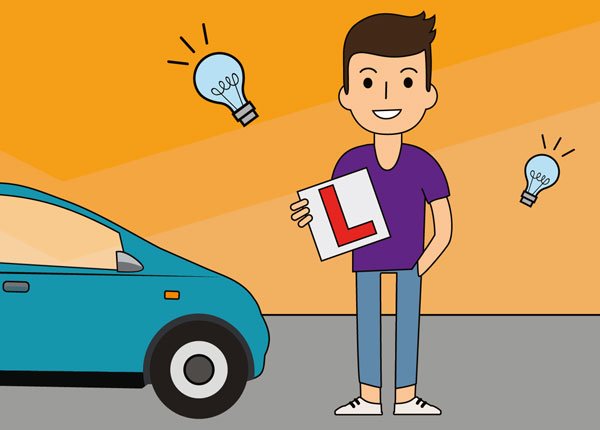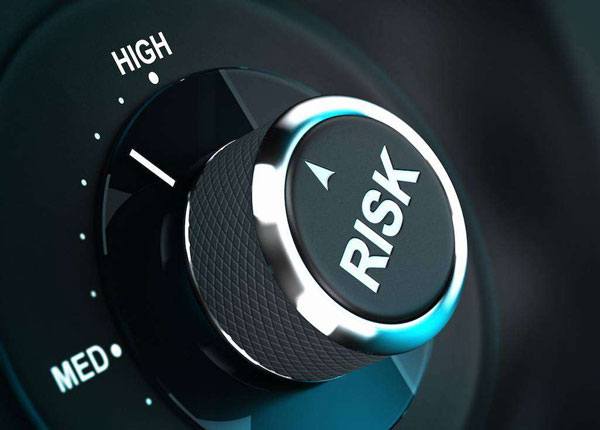
The Dangers of Disrupting Traffic Flow - Unsafe Driving Maneuvers
Updated Dec. 15, 2020On busy roadways, the way you turn, change lanes merge, pass and otherwise interact with the traffic around you influences the level of risk you are exposed to. To create the safest possible environment, motorists must maneuver in a way that keeps traffic flowing smoothly.
Disrupting the flow of traffic will set off a chain reaction that could force other drivers to react in an unsafe way. For instance, if you were to stop suddenly in a densely packed line of vehicles, the driver behind you may also have to stop suddenly, as would the driver behind them, and so on. Eventually, a driver in the chain may not react quickly enough and your initial action will have caused a collision.
Let’s talk about some actions you should avoid while driving in heavy traffic.
Making improper turns
Executing a turn poorly will increase risk for all traffic using the roadway, yourself included. Always follow this procedure when making any turn:
- Check traffic control devices to make sure the turn you intend to make is permitted.
- Begin signaling your intention to turn at least 100 feet before the turn.
- Wait until there is a large enough gap in traffic for you to complete the turn safely. Look out for motorcyclists, bicyclists and pedestrians.
- Remain in the same lane throughout the turn.
- Proceed with additional caution if your view is obscured.
- Deactivate your turn signal when you have completed the turn.
Turning left at an intersection is always a particularly risky maneuver, as it involves crossing two streams of opposing traffic (vehicles moving toward you and vehicles approaching from your left). Remain in your lane and be sure to yield to oncoming traffic. Cutting corners will significantly increase your chances of colliding with another vehicle.
While there is generally less conflict involved in right turns, you may experience conflict with other traffic if you turn right under a red light. Look out for pedestrians using the crosswalk after the intersection and be sure to keep your right turn nice and tight. Making a wide right turn could take you into the path of opposing traffic, forcing other drivers to swerve.
Drivers must exercise extreme caution when making a U-turn, as it often means crossing at least two streams of opposing traffic. Always check that U-turns are not prohibited before beginning the maneuver. When you have space, execute the U-turn in a single fluid maneuver. Hesitating part way through a U-turn may confuse other road users and cause them to make an unsafe action.
Always be on the lookout for other drivers making or preparing to make turns. It may be that you can make their maneuver safer by yielding or moving over – do this whenever possible.
Keep in mind that other motorists may not always use their turn signals appropriately, so you cannot make any assumptions. An active turn signal does not guarantee that the vehicle will turn, nor does an inactive turn signal guarantee that it will continue moving straight on. To reduce risk on the roadway, you must learn to be ready for all eventualities.
Unsafe lane usage and passing
Changing lanes, merging and passing are extremely risky maneuvers, as they typically require coordinated action from several vehicles. As these maneuvers are governed by “general rules” rather than implicit instructions from traffic control devices, their success relies on each driver involved acting appropriately. If one driver behaves selfishly or inappropriately, a collision could easily occur.
Without the aid of traffic control devices, you must determine whether it is safe to pass or change lanes and how best to execute the maneuver. Passing, changing lanes or merging safely depends on you being able to control your vehicle effectively while remaining tuned in to the situation on the roadway. Accurately judging the position and trajectory of the vehicles around you is crucial.
When merging, passing or changing lanes you must take steps to ensure you will not disrupt other traffic and that no other vehicles are on a path that would disrupt you. Scan the roadway ahead, check your mirrors and turn to check your blind spots before, during and after the maneuver. Avoid looking at one spot for too long, as you may miss something important elsewhere on the roadway. Having merged into a new lane, adjust your speed to match that of existing traffic within that lane.
When another motorist merges into your lane ahead of you, reduce your speed to maximize their available space and make the maneuver safer. Of course, you should only slow down to the extent that it will not force drivers behind you to brake suddenly.
If you encounter an erratic or unsafe driver who is straying too close to the dividing line, weaving or traveling too slowly, increase your following distance. While being stuck behind such drivers is annoying, you must be prepared for the fact that they are likely to maneuver unexpectedly. Trying to pass the erratic driver would likely increase risk rather than alleviate it. Of course, you should pass if it is safe to do so and they are driving too slowly for you to increase your following distance.
When choosing a lane position, remember that the safest place to be is usually the middle of your lane. From the center of your lane, you are ready to move in any direction with relative ease, should you need to take evasive action.
Driving on the wrong side of the road
The single most disruptive action you can take while driving is to drive against the flow of traffic. This may happen if you enter a one-way road in the wrong direction, turn down an exit ramp to enter a highway, turn into the wrong lane or execute an unsafe pass that puts you in conflict with opposing traffic. As mistakes go, the consequences of driving on the wrong side of the road are often serious. If a collision occurs when you are driving the wrong way, it is likely to be head-on.
Head-on collisions are often deadly, particularly when they occur at high speeds. While you might think it would be hard to drive on the wrong side of the road by accident, it happens all the time. A large percentage of wrong-way driving incidents occur on limited-access highways, where it can be easy to confuse an exit ramp with an entry ramp. As limited access highways are our nation’s fastest roads, any head-on collision that occurs on such a road is likely to be fatal. According to the Federal Highway Administration, wrong-way driving results in 300 to 400 deaths every year around the United States.
Finding your way back to safety can be difficult if you end up driving the wrong way. You will automatically look to road signs for guidance and find that they are all facing away from you, to accommodate traffic moving in the correct direction. Your focus must be on avoiding driving in the wrong direction in the first place. As traffic control devices are set-up to prevent wrong-way driving mistakes, all you must do is pay close attention to the information around you. Look out for clues that indicate the direction you should be traveling in, such as:
- The direction in which existing traffic is moving on that roadway
- The direction in which parked cars are facing
- The position of the yellow center line (it should be on your left)
- ONE WAY, WRONG WAY and DO NOT ENTER signs
If you ever encounter another motorist traveling in the wrong direction toward you, sound your horn to alert them of their mistake and to warn other road users. Seeing a car moving towards you against the flow of traffic can be frightening, but do not panic. Instead, cut your speed as much as safely possible and maneuver out of their path. Keep an eye on the vehicles around you and maneuver in a controlled manner, to avoid causing a collision while you get out of the way.
Following too closely or tailgating
Leaving insufficient space between your vehicle and the vehicle in front of you is one of the fastest ways to disrupt traffic flow and increase risk for every driver on the roadway. If the driver ahead of you brakes suddenly and you are too close to stop safely, you will likely rear-end them. The consequences of rear-end collision are usually less severe than other types of collision, however, they do account for a considerable portion of all collisions.
Check out these NHTSA crash statistics from 2013:
- 6 percent of traffic fatalities were caused by rear-end collisions
- 32 percent of all crashes resulting in injuries and property damage were rear-end collisions
Reducing the space in front of you reduces the time you have to react to danger. If the driver ahead of you stops or slows down suddenly, you may rear-end them. Equally speaking, if another driver rear-ends you because they were tailgating, your vehicle will slam into the vehicle in front if you are following too closely.
Even if you manage to avoid a rear-end collision, following too closely increases risk in other ways. For instance:
- Your view of the road ahead will be obscured by the vehicle you are following
- The driver of the vehicle you are tailgating will likely become anxious or frustrated that you are following too closely and may drive recklessly or make a mistake.
Maintaining a safe following distance is one of the most important driving tactics to help minimize risk and maximize safety. In general driving situations, you should aim to keep a distance of at least three seconds between your vehicle and the vehicle in front. Though, there are some circumstances in which you should allow an even greater following distance, such as:
- When following a motorcycle or a large vehicle
- When driving at high-speeds (the faster you are traveling, the more time you will need to react to danger)
- When driving on a slick roadway or in poor weather conditions
- When driving in a “high-risk” area such as a school zone
- When another vehicle is following you too closely (the worst thing you can do in this situation is speed up and close the gap in front of you!)
Ignoring high-risk situations
The risk you are exposed to on any stretch of roadway will be increased by any driver who refuses to acknowledge and adapt to that risk. Imagine a residential street covered with snow – this is a risky situation on its own. Now, suppose every motorist using that street refused to acknowledge that risk and drove as they would in favorable conditions, at the posted speed limit of 35mph. Needless to say, an already risky situation would become considerably more dangerous!
Creating a safe roadway environment for all road users is a matter of teamwork. If even one vehicle on the road does not play by the rules, everybody using the road could suffer. There are a variety of reasons why a driver may not slow down, alter their position or take some other necessary safety-enhancing action. It could be that they are not paying attention, that they are in a hurry to get somewhere or even that they are showing off.
Regardless of the reason, the consequences of failing to adapt to a high-risk situation are always the same: every person on the roadway is more likely to suffer property damage, physical injury and death. Do not let your poor decision be the cause of one of these outcomes for yourself, or anybody else. When you’re behind the wheel, every choice you make matters.




